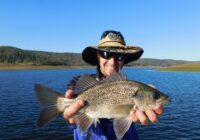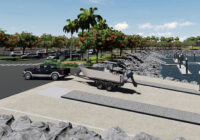New stronger safety equipment laws to save lives on the water in Western Australia
On the 12 October, the Western Australia Government released the Recreational Vessel Safety Equipment Review Final Position Paper, accepting 23 proposals to simplify laws and keep people safe on the water.
Responding to community feedback, there will be two sets of safety equipment rules for recreational vessels – one for registrable vessels and the other for non-registrable vessels.
This is a strengthening of current arrangements which require vessels to carry lifejackets only in unprotected waters.
It will also be mandatory to wear a lifejacket of minimum buoyancy of level 100 (type 1):
- for children aged one to 12 when on any vessel operating more than 400 metres from shore in unprotected waters;
- for each person on board a registrable vessel less than 4.8m in length when operating more than 400 metres from shore in unprotected waters.
Queensland, New South Wales, Victoria and South Australia all have laws requiring compulsory wearing of lifejackets on a vessel less than 4.8 metres, while Tasmania mandates the wearing of lifejackets on vessels less than six metres.
In another first, a GPS enabled emergency position indicating radio beacon, or GPS enabled personal locator beacon if worn, will be required on recreational vessels operating more than 400 metres from shore in unprotected waters. Skippers will have five years to upgrade this equipment from when the legislation is passed.
Skippers operating beyond 400 metres from shore in unprotected waters will have the option to carry an electronic night signalling device instead of flares, as long as they also carry a GPS enabled emergency position indicating radio beacon or wear a GPS enabled personal locator beacon.
To enhance safety, the distance offshore at which registrable vessels are required to carry an approved radio will reduce to four nautical miles and the less reliable 27 MHz marine radios will be phased out over five years in favour of HF or VHF radios.
Following feedback from the community, current arrangements for non-registrable vessels, including paddle craft, kite surfers, sailboards and small sailing craft, will remain largely unchanged. As non-registrable vessels, this arrangement will also now apply to tender vessels.
In a continuation of current arrangements, stand-up paddle boards, surf skis and boogie boards will have no mandated safety equipment requirements.
Extensive community and stakeholder consultation was undertaken, with the review supported by a reference group with representatives from 19 industry and community organisations.
Regulations will be changed next year and the Department of Transport will implement a safety education program to raise awareness of the new requirements.

The Hon. Rita Saffioti WA Transport Minister said: “We have undertaken extensive consultation with stakeholders and the local community to finalise the Recreational Vessel Safety Equipment Review Final Position Paper, with two rounds of community consultation and more than 2,200 survey results received.
“The purpose of this review was to simplify laws, that since 1992 have been developed in a piecemeal fashion, and ensure we are keeping people safe while out enjoying the water.
“In Victoria there were 59 boating fatalities in the six years prior to the introduction of compulsory lifejacket wearing in 2005. In the six years following there were only 16 recorded fatalities.
“The new requirements focus on safety equipment that will raise the alarm and assist survival and rescue.
“We will now move to draft the regulations so we can ensure greater clarity and simplicity for boaties.
“The outcomes announced today ensure WA has a contemporary safety equipment regime that maximises boating safety while being considerate of the costs and practical implications for the boating community.”
In Western Australia, vessels are identified as follows:
Registrable vessel – means any pleasure vessels, within the meaning of section 98 of the Western Australian Marine Act 1982, which is or may be propelled by mechanical power, including such a vessel which are ordinarily propelled by sail only.
Non-registrable vessel – a non-registrable vessel is not required to be registered with the Department of Transport if they are in or are used in any navigable waters. Includes sailboards, most non-motorised paddlecraft, tenders and sailing dinghies.
Proposals accepted by the State Government
- A vessel can operate at any distance from the shore regardless of its length.
- There will be two sets of safety equipment rules governing recreational vessels in WA; one for registrable vessels and another for non-registrable vessels.
- It will be mandatory to carry a Global Positioning System (GPS) enabled emergency position indicating radio beacon (EPIRB) on any vessel when operating more than 400 metres from shore in unprotected waters.
- A GPS enabled personal locator beacon may be carried instead of an EPIRB as long as it is worn by at least one person on board at all times when operating more than 400 metres from shore in unprotected waters.
- It will be mandatory to carry two in date hand-held orange smoke flares and two in date red hand-held flares on any vessel operating more than 400 metres from shore in unprotected waters. An approved electronic night signalling device may be carried in lieu of flares, if a GPS enabled EPIRB or PLB is also carried.
- It will be recommended, not mandatory, to carry a fire extinguisher on a vessel.
- It will be recommended, not mandatory, to carry or have fitted a means of removing unwanted water from a vessel.
- It will be recommended, not mandatory, to carry an anchor or line on a registrable vessel or non-registrable vessel.
Registrable vessel specific proposals accepted
- It will be mandatory to carry an appropriately sized life jacket with a minimum buoyancy of Level 100 (type 1) for each person on board.
- It will be mandatory for each person on board a vessel less than 4.8 metres to wear a lifejacket of minimum buoyancy of level 100 (type 1) when operating more than 400 metres from shore in unprotected waters.
- It will be mandatory for each person more than one-year-old and under the age of 12 years on board to wear a lifejacket of minimum buoyancy of level 100 (type 1) when the vessel is operating more than 400 metres from shore in unprotected waters.
- It will be mandatory to wear a lifejacket of minimum buoyancy of Level 50S (type 3) when riding on a personal watercraft in all waters.
- It will be mandatory to carry either a HF or VHF marine radio when operating more than four nautical miles from shore in protected waters.
Non-registrable vessel
- It will be mandatory to carry an appropriately sized life jacket with a minimum buoyancy of Level 50S (type 3) for each person on board operating more than 400 metres from shore in unprotected waters.
- It will be mandatory to wear a lifejacket of minimum buoyancy of level 50S (type 3) on board a vessel less than 4.8 metres when operating more than 400 metres from shore in unprotected waters.
- It will be mandatory for each person more than one-year-old and under the age of 12 years on board to wear a lifejacket of minimum buoyancy of level 50S (type 3) when operating more than 400 metres from shore in unprotected waters.
Read the WA Governments Media statement here











